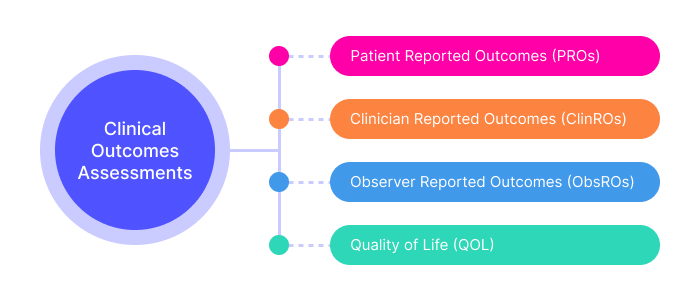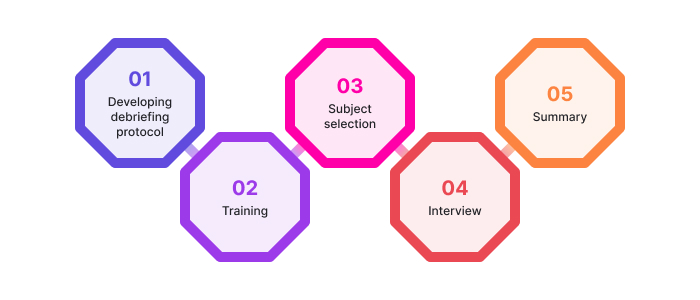Imagine that you’re conducting research, aiming to release a global product. Decently translated questionnaire in hand, you conduct the interviews, gather results and create a product based on those results. Somehow the product fails and, naturally, you retrace your steps to determine what went wrong. You realize that one or two important questions in your questionnaire were misunderstood by the respondents, yielding incorrect results and leading to the failure of your product. How could you avoid this? By conducting cognitive debriefing.
Cognitive debriefing is a practice that improves the quality of translated instruments (surveys, questionnaires) used in the medical and pharmaceutical field to collect data from respondents. In this article we will discuss what cognitive debriefing is, how it’s done and why it’s important.
Cognitive debriefing is a part of linguistic validation, helping to understand how well a pool of diverse subjects comprehends a translation. The outcome of cognitive debriefing is a document with equivalent linguistic context in both source and target languages.
Linguistic validation is a complex process needed to ensure the linguistic accuracy of translated documents. This is an overview of how it’s done:
Cognitive debriefing comes after the last step. It involves picking several people, as a test group formed from the target population, and exposing them to the translated item. During the interview, the respondents express their impression of each question and explain their answers and understanding of the items, specifically the words included in each item. The interviewer must note the respondents’ subtle reactions to the translated items, gathering possible errors and difficulties in them. This way the interviewer can discern confusing and difficult to comprehend aspects of the translation for the experts to eliminate them.
Cognitive debriefing is commonly used for questionnaires used as instruments for Clinical Outcomes Assessments, such as:

These questionnaires are designed to gather information in multilingual trials and clinical research. They include instructions, questions or items and corresponding response categories or choices. For the medical and pharmaceutical fields, it is vital that respondents understand the queries correctly, to avoid errors in diagnosis, testing and trial results.
The importance of cognitive debriefing stems from where it is used. Medical information is very nuanced and sensitive to even the slightest of errors. A mistranslated word has the potential to cause a mistake in diagnosis, a medical complication or rejection of a clinical research project.
Cognitive debriefing exists to aid in gathering relevant information from clinical trials, studies and interviews. It protects patients and researchers from linguistic errors, improving the quality of instruments used in trials and surveys by significantly increasing the quality of translated items. With better understanding of the survey, the respondents provide better answers, which provide more robust data for follow-up research, better treatment, etc.
In short, the goal of the cognitive debriefing process is to remove cultural and linguistic barriers when conducting medical and pharmaceutical surveys involving residents from different countries. It is also needed to establish concept equivalence.

A major aspect of cognitive debriefing is ensuring that respondents using a target language will understand the terms in the same way the speakers of the source language will. This helps to fill the translated item with the correct terminology. Respondents in cognitive debriefing interviews can share how clear the words used in the item are, and provide alternative, more natural or common terms to replace improper response options.
Another aspect of cognitive debriefing is overcoming cultural barriers. The target audience should not encounter confusing, inappropriate or downright offensive language when completing the questionnaire. The expressions used in surveys should be relevant to the respondents. The translators should consider the audience’s religion, upbringing and cultural slang when settling on their final version.

Before cognitive debriefing can be conducted, the interviewers need guidelines. Developing a protocol for the project is a survey research expert’s responsibility. The expert composes a transcript, customized to specific target questionnaire issues such as subject pools, procedures for subjects with or without the target disease, mode of administration, etc.
The expert then instructs bilingual interviewers on how to conduct cognitive debriefing interviews in line with the protocol. The interviewers rehearse and carry out practice interviews where their skill is thoroughly evaluated.
A minimum of 5 native speakers outside of the translation process are picked to take part in the cognitive debriefing interview. The sample of subjects should be diverse, from age to gender to employment status and education level. Ideally, the respondents should fall into the project’s target demographics, be native speakers of the target language and belong to the target culture.
The interviewers carry out debriefing interviews following the protocol established by the survey research expert. They determine how clear and comprehensible the questionnaire is, check for missing or inconsistent responses and note if the subjects had difficulty understanding questions or answering them. If there are alternatives to words used in the questionnaire, respondents can choose the option that seems more natural to them.
After the interviews are conducted, the survey research expert makes a summary of debriefing results. Based on this summary, the expert decides whether to approve the results, conduct additional testing or re-translate the questionnaire. If necessary, the process of harmonization (developing a common version across questionnaires) is repeated until all parties involved in the translation process (the expert, project manager, translators and interviewers) are satisfied.
After this step is complete, a summary report is written, including the methodology used and cognitive debriefing results. A final version of the survey instrument can then be produced based on that.
In summary, cognitive debriefing is a vital practice for those who wish to conduct multilingual surveys. Ensuring the quality of translation and comprehensibility of your questionnaires gives the chance for better results and higher probability that your study or product will be approved, useful and successful. Considering just how many people are involved in linguistic validation, you almost certainly need assistance from an experienced partner.
The Palex team consists of talented experts from all over the globe. We employ native speakers from medical, pharma, life sciences and other fields, providing language validation services of impeccable quality. If you are seeking an expert linguistic validation service, contact us and we will discuss your project with you.





